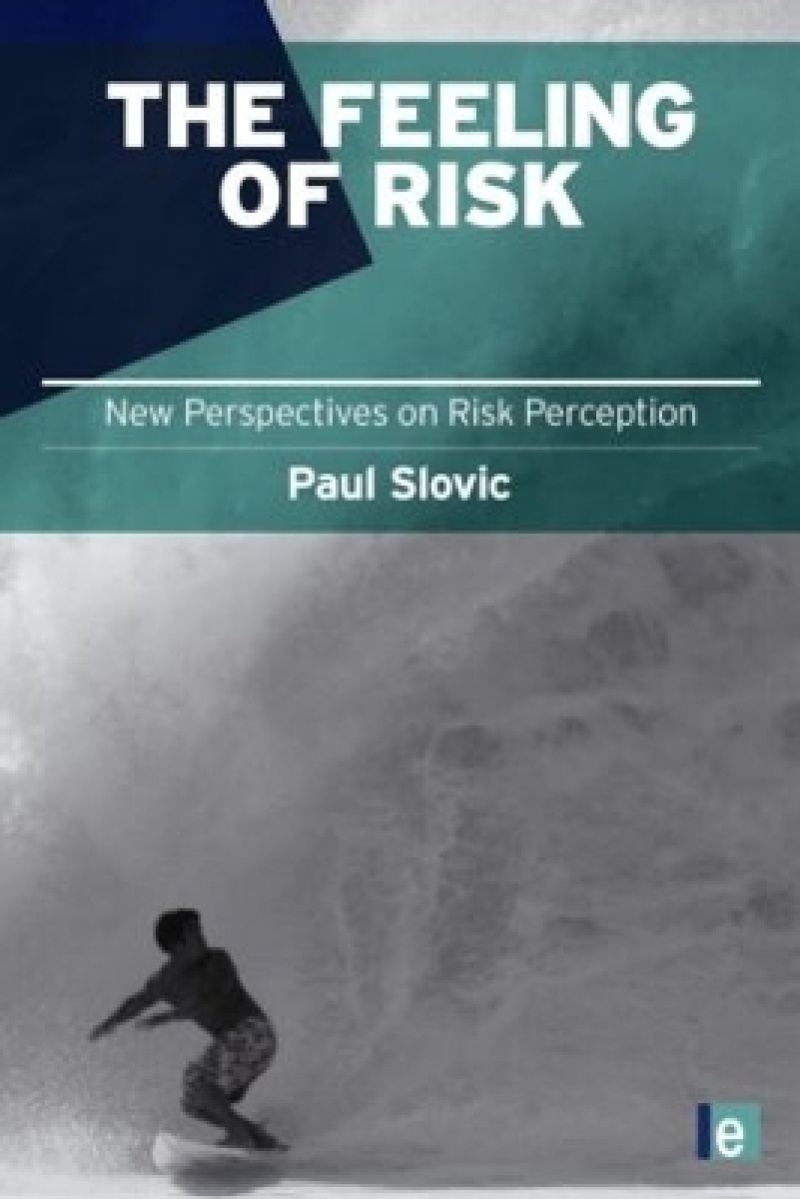<p><strong>'To understand how people deal with risk, you have to begin with the psychology of risk. To understand the psychology of risk, you have to begin with the work of Paul Slovic. This book is fundamental: Anyone concerned with risk in any of its various and shifting forms absolutely must read it.'</strong> <strong>- </strong><em>Dan Gardner, author of Risk: The Science and Politics of Fear</em></p><p> <strong>'No one has done more to increase our understanding of perceived risk than Paul Slovic. This book provides a compilation of much of Slovic's recent research on the determinants of risk perceptions. The research focus is on two thought-provoking ideas. First, it is argued that risk perceptions often follow quick (and often unconscious) like or disliking affective judgments rather than risk perceptions leading to the liking or disliking of an activity. Second, it is argued that perceptions of risk are, at least in part, determined by cultural worldviews. Again, the idea is that 'facts' and 'values' both determine risk perceptions in ways not previously understood. Beyond the determinants of risk perceptions this book also discusses the important implications of the psychology of risk perceptions for government policies to regulate hazardous activities. Once again Paul Slovic has demonstrated why he has long been the leading thinker dealing with perceived risk.'</strong><em><strong> </strong>- John W. Payne, The Joseph J. Ruvane, Jr. Professor of Business, Fuqua School of Business, Duke University, USA </em></p><p><strong>'Slovic provides a unique account of our current understanding of risk perception, one which will be invaluable for all students of the relationship between feeling and cognition in risk decision-making and communication.'</strong> <strong>- </strong><em>Professor Glynis M Breakwell, Vice-Chancellor, University of Bath, UK </em></p><p><strong>'Given the risks we face as a species, the risks of getting risk 'wrong' are too great. Understanding how we perceive risk is the first step toward making healthier choices for ourselves and our society. This is an important book, at a critical time, and should be high on every policymaker's reading list.'</strong> <em>- David Ropeik, author of 'How Risky Is It, Really? Why Our Fears Don't Always Match the Facts' </em></p><p><strong>'The book would be very useful for anyone who is concerned with any aspect or type of risk study and would like to have the overall and complete information on the factors governing risk and of decision making in general, a must read this book.'</strong> <em>- International Journal of Performability Engineering</em></p><p><strong>'Ultimately, the book’s contribution to homeland security and emergency management scholars and practitioners lies in the fact that it raises our awareness of the many ways of viewing risk. It challenges us to contemplate the multifaceted elements of risk, the ways in which we perceive it, and the decisions we make in response to it.'- </strong><em>Nicholas V. Cagliuso Sr., Journal of Homeland Security and Emergency Management </em></p>
The Feeling of Risk brings together the work of Paul Slovic, one of the world's leading analysts of risk, to describe the extension of risk perception research into the first decade of this new century.
In this collection of important works, Paul Slovic explores the conception of 'risk as feelings' and examines the interaction of feeling and cognition in the perception of risk. He also examines the elements of knowledge, cognitive skill, and communication necessary for good decisions in the face of risk.
The first section of the book looks at the difficulty of understanding risk without an emotional component, for example that disaster statistics lack emotion and thus fail to convey the true meaning of disasters and fail to motivate proper action to prevent them. The book also highlights other important perspectives on risk arising from cultural worldviews and concerns about specific hazards pertaining to blood transfusion, biotechnology, prescription drugs, smoking, terrorism, and nanotechnology.
Following on from The Perception of Risk (2000), this book presents some of the most significant research on risk perception in recent years, providing essential lessons for all those involved in risk perception and communication.
Introduction and Overview
Part I: Risk as Feelings
1. The Affect Heuristic and the Attractiveness of Simple Gambles
2. Risk as Analysis and Risk as Feelings: Some Thoughts about Affect, Reason, Risk, and Rationality
3. Attentional Mechanisms in the Generation of Sympathy
4. Sympathy and Callousness: The Impact of Deliberative Thought on Donations to Identifiable and Statistical Victims
5. The More Who Die, The Less We Care
6. Numbers and Nerves: Toward an Affective Apprehension of Environmental Risk
7. Cigarette Smokers: Rational Actors or Rational Fools?
8. Affect, Risk Perception and Future Optimism after the Tsunami Disaster
Part II: Culture, Cognition, and Risk
9. Gender, Race, and Perceived Risk: The 'White Male' Effect
10. Discrimination, Vulnerability, and Justice in the Face of Risk
11. Culture and Identity-Protective Cognition: Explaining the White-Male Effect in Risk Perception
12. Book Review: Fear of Democracy: A Cultural Evaluation of Sunstein on Risk
13. Risk Lived, Stigma Experienced.
Part III: Psychometric Studies
14. Public Perception of the Risk of Blood Transfusion
15. Expert and Public Perception of Risk from Biotechnology
16. Risk Perception of Prescription Drugs: Results of a National Survey
17. Predicting and Modeling Public Response to a Terrorist Strike
18. Cultural Cognition of the Risks and Benefits of Nanotechnology
Part IV: Risk Knowledge and Risk Communication
19. The Social Amplification of Risk: Assessing Fifteen Years of Research and Theory
20. Numeracy Skill and the Communication, Comprehension, and Use of Risk-Benefit Information
21. Public Understanding of the Illnesses Caused by Cigarette Smoking
22. The Impact and Acceptability of Canadian-Style Cigarette Warning Labels among U.S. Smokers and Nonsmokers
